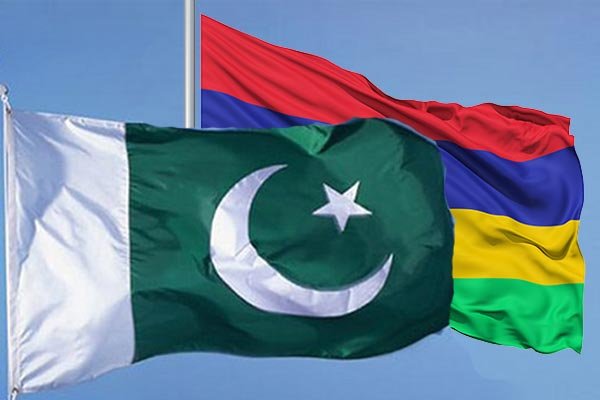As the calendar marks the 12th of March, Mauritius chosen day for reflection and celebration, Pakistan extends its heartfelt felicitation to the Mauritius people and government on Mauritius Statehood Day.
Pakistan established its mission in Port Louis in 1969. From that time on, both states enjoyed cordial relations. Additionally, the Mechanism of Bilateral Political Consultations and a joint working group were established in 2004 and 2005, respectively.
They also signed a preferential trade agreement in 2007. The overall bilateral trade for the fiscal year 2022–23 amounted to US$35.85 million. Within this, exports from Pakistan to Mauritius reached US$34.25 million, while imports from Mauritius to Pakistan were valued at US$1.6 million.
There are around 4,00 Pakistanis who are currently residents of the Republic of Mauritius.
Background
The country has a long history of colonization, spanning from the Dutch to the British Empire. They trace their origins to the plantation owners and slaves who were brought to work the sugar fields. After 1961, an independence campaign gained momentum. When the British agreed to permit additional self-government and eventual independence.
A coalition composed of the Mauritian Labor Party (MLP), the Muslim Committee of Action (CAM), and the Independent Forward Bloc (IFB) a traditionalist Hindu party won a majority in the 1967 Legislative Assembly election despite opposition from Franco-Mauritian and Creole supporters of Gaetan Duval’s Mauritian Social Democratic Party (PMSD). The contest was interpreted locally as a referendum on independence.
Sir Seewoosagur Ramgoolam, MLP leader and chief minister in the colonial government, became the first prime minister at independence on March 12, 1968. This event was preceded by a period of communal strife, brought under control with assistance from British troops.
Afterwards, elections in 1947 for the newly created Legislative Assembly marked Mauritius’ first steps toward self-rule.
Symbolism of Mauritius Flag
Based on historical and cultural context, Mauritius people interpret the colors of the flag.
The Mauritius flag features an unusual four-band design. Each color of the flag has a specific meaning for the country. The red band represents colonization and the blood of the slaves; the blue band is the ocean.
The yellow band symbolizes the sun and freedom, and the green band represents the greenery and plants of the land.
Also Read: UNDP Pakistan and JSB LPak Collaborate for SDGs
Celebrations of Mauritius Statehood Day
The day begins with the flag-raising ceremony, like in any other country. National flags are hoisted across the island with pride, symbolizing the country’s sovereignty.
On this special occasion, traditional dance and music performances showcase the rich cultural heritage of a country. Local artists and performers contribute to the festive spirit.
Local communities come together to celebrate the shared identity of being Mauritians. Many people attend religious services or visit places of worship.
On this joyous occasion, sharing traditional meals reinforces a sense of cultural unity and national pride.Mouthwatering specialties like dholl puri (a type of flatbread stuffed with yellow split peas, served with chutney and pickles), vindaye (a spicy fish curry), rougaille (spicy tomato sauce), and gateaux piment (a type of fried split pea cake).
Mauritius is home to a number of rum distilleries, and locally grown tea is popular, a nod to its British rule in the nineteenth century. Its culture is a fascinating blend of African, South Asian, and European influences.
A dedicated student of International Relations at the University of Karachi (UOK), and a passionate explorer of Long-form Journalism. She is keen to understand the changing dynamics of International Affairs and how states use multi-vector foreign policy in a contemporary era to acquire their interest. She is eager to contribute to the discourse on Intricate geopolitical matters. She can be reached at saudha854@gmail.com



